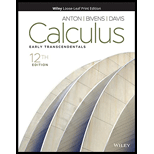
Suppose that

Want to see the full answer?
Check out a sample textbook solution
Chapter 15 Solutions
Calculus: Early Transcendentals, Enhanced Etext
Additional Math Textbook Solutions
Basic Business Statistics, Student Value Edition
College Algebra (7th Edition)
Calculus for Business, Economics, Life Sciences, and Social Sciences (14th Edition)
University Calculus: Early Transcendentals (4th Edition)
Calculus: Early Transcendentals (2nd Edition)
Thinking Mathematically (6th Edition)
- Find the curl of the vector field F =< yx³, xz², zyб curl = Te 1012 + 3+ karrow_forwardThe nabla formulas corresponding to the derivative rule of income are gVf+fVg, (Vƒ). F + f(V.F), (Vf) x F + f(V x F). ▼(fg) V. (fF) ▼ x (fF) = = = Justify the middle one (e.g. in the case of n = 3). Hint: The coordinate functions of the vector field fF are fF₁ etcarrow_forwardanswer in fraction please thanksarrow_forward
- Compute the flux of the vector field F = 5yi +37-5xzk through the surface S, which is the surface y = x² + 2², with x² + 2² ≤ 1, oriented in the positive y-direction. flux = You can get a hint after 2 incorrect answers.arrow_forwardWe are given a vector field and a parametric curvearrow_forwardShow that there is no vector field G = (P,Q, R) where P, Q and R have continuous second order partial derivatives such that curl G = (r", y, 2:"). %3Darrow_forward
- A net is dipped in a river. Determine the flow rate of water across the net if the velocity vector field for the river is given by v=(x-y,z+y+7,z2) and the net is decribed by the equation y=1-x2-z2, y20, and oriented in the positive y- direction. (Use symbolic notation and fractions where needed.)arrow_forward, Let C" (R) be the vector space of "smooth" functions, i.e., real-valued functions f(x) in the variable z that have infinitely many derivatives at all points x E R. Let D: C* (IR) → C¤(R) and D² : C∞ (R) → C°(R) be the linear transformations defined by the first derivative D(f(x)) = f'(x) and the second derivative D²(f(x)) = f"(x). a. Determine whether the smooth function g(x) = 7e1z is an eigenvector of D. If so, give the associated eigenvalue. If not, enter NONE. Eigenvalue = b. Determine whether the smooth function h(x) = sin(9x) is an eigenvector of D2. If so, give the associated eigenvalue. If not, enter %3D NONE. Eigenvalue =arrow_forwardLet f be a scalar-valued function and F a vector field defined on R^3. ∇f iis the gradient of the function f. Show whether the operations shown produce a scalar function, a vector field, or absolute nonsense.arrow_forward
- Algebra & Trigonometry with Analytic GeometryAlgebraISBN:9781133382119Author:SwokowskiPublisher:Cengage
